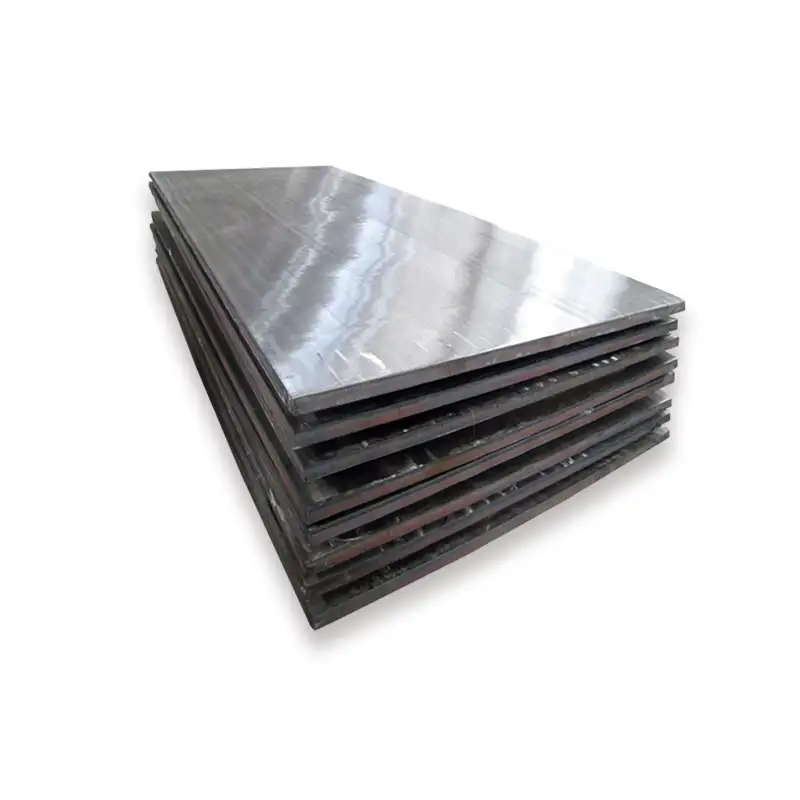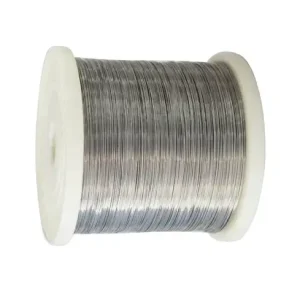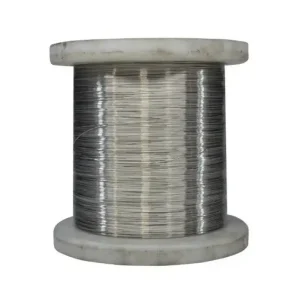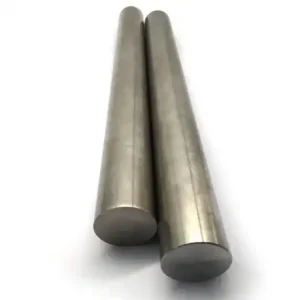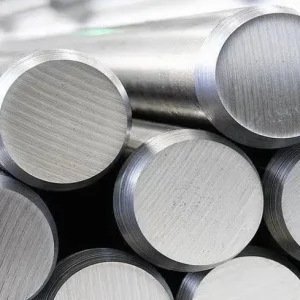AISI/SAE 1023 cold rolled steel plate is a plain low-carbon steel optimized for high formability, good machining characteristics and reliable weldability — making it a practical choice for stamped parts, nested components, mild-load structural applications and machining stock where surface finish matters. For buyers seeking consistent mill chemistry, tight cold-rolled tolerances and rapid factory dispatch from a China manufacturer, MWAlloys offers direct factory pricing, visible stock and expedited shipment options that reduce landed cost without sacrificing traceability.
What is 1023 Cold Rolled Steel Plate?
1023 steel (designated SAE/AISI 1023, UNS G10230) is a plain carbon steel with nominal carbon near 0.20–0.27% and modest manganese (typically 0.25–0.60%). The “cold rolled” condition means the plate/sheet has passed through rollers at a temperature below the steel’s recrystallization point, producing improved surface finish, closer thickness tolerances and slightly higher yield/tensile than comparable hot-rolled material. End uses include punched/stamped components, general engineering parts, mild structural elements and machined blanks where surface appearance and dimensional accuracy are important.
how 1023 relates to other carbon steels
-
Lower carbon than 1040/1045 — therefore more ductile and easier to form.
-
Similar in many respects to ASTM A36 for general structural use, though A36 is specified differently for structural applications. Comparative property tables show broad overlap in application space.
-
Often chosen instead of 1022 or 1018 when slightly higher strength is required while keeping very good formability.
Chemical composition
Below is a practical composition table that procurement and QC teams will find useful. These ranges reflect typical SAE/AISI 1023 mill limits used for cold-rolled plate; always confirm mill certs for each shipment.
| Element | Typical range (wt.%) |
|---|---|
| Carbon (C) | 0.19 – 0.27 |
| Manganese (Mn) | 0.25 – 0.60 |
| Phosphorus (P) | ≤ 0.03 – 0.04 (max) |
| Sulfur (S) | ≤ 0.03 – 0.05 (max) |
| Silicon (Si) | ≤ 0.10 – 0.40 (often de-oxidizer residual) |
| Chromium (Cr) | ≤ 0.15 (trace) |
| Nickel (Ni) | ≤ 0.20 (trace) |
| Copper (Cu) | ≤ 0.20 (trace) |
| Iron (Fe) | Balance |
Notes: exact limits vary by mill and standard cited on the material certificate. Mill certificates (EN/ASTM/SAE) are the controlling document for acceptance.
Mechanical & physical properties (typical ranges)
Values shown are representative for cold-rolled, normalized/annealed plate supplied in typical mill conditions. Use certified test reports for project acceptance.
| Property | Typical value (metric) | Typical value (imperial) |
|---|---|---|
| Tensile strength (UTS) | 370 – 430 MPa | 54–62 ksi |
| Yield strength (0.2% proof) | 210 – 360 MPa (depends on temper) | 30–52 ksi |
| Elongation (in 50 mm) | ≥ 15% | ≥ 15% |
| Reduction of area | 35–50% | — |
| Hardness (Brinell) | ~111 – 121 HB | — |
| Modulus of elasticity (E) | ~190–210 GPa | 27,500–30,500 ksi |
| Density | 7.85 g/cm³ | 0.284 lb/in³ |
These mechanical values are typical of low-carbon, cold-worked steel and provide the balance between formability and strength that designers often require.
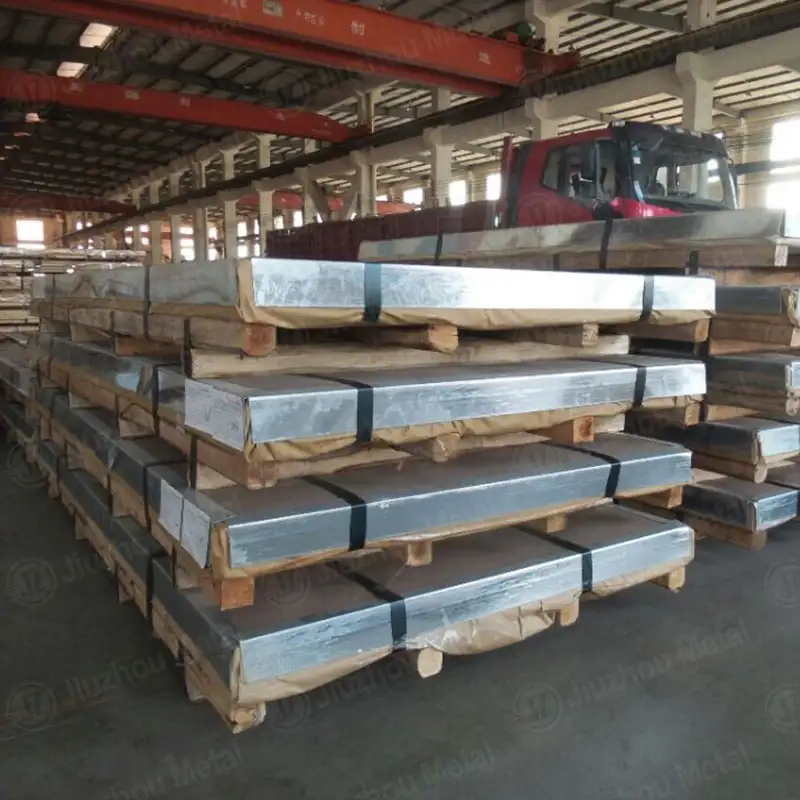
1023 Cold Rolled Steel Plate specifications & tolerances (typical)
Manufacturers adopt either SAE/AISI references or national standards (ASTM, EN, JIS) plus customer-agreed tolerances. Table below lists common cold-rolled plate parameters:
| Item | Common values / notes |
|---|---|
| Product form | Cold-rolled plate / sheet (coils slit, cut-to-length or blanks) |
| Thickness range (cold-rolled) | 0.4 mm to ~6.0 mm (thin sheet); some mills cold-roll thicker to 8–10 mm with additional passes/finish) |
| Standard widths | 1000 mm, 1219 mm, 1250 mm, 1500 mm (custom widths possible) |
| Standard lengths | Cut-to-length to customer requirement; coils supplied in continuous lengths |
| Thickness tolerance (typical) | +/- 0.03–0.15 mm depending on nominal thickness and mill class |
| Flatness | Mill class flatness tolerances per order |
| Surface finish | RO (rolled), 2B, pickled & oiled, or skin-passed finish |
| Delivery condition | Cold-rolled, annealed and temper rolled (soft anneal typically) |
| Certifications | Mill cert to EN 10204-2.1/3.1 (as requested); chemical & mechanical test reports |
Tip for buyers: specify finish (pickled & oiled if corrosion protection required for storage), thickness tolerance class and required certification level on the purchase order.
What is equivalent to 1023 Cold Rolled Steel?
Common international equivalents and cross-references for SAE/AISI 1023 include several ASTM and national designations. Typical equivalency list:
-
SAE/AISI 1023 (UNS G10230) — primary designation.
-
ASTM A29 / A29M — general carbon steel bars: some cross-references include 1023 chemistries.
-
EN / European: no direct 1:1 single EN grade; similar behaviors to low-carbon steels such as S235 (for structural use) but chemistry and mechanical specs differ; always use direct conversion tables and confirm with test reports.
-
JIS / Japanese: near equivalents in low-carbon categories exist but must be evaluated by chemistry and mechanical specs.
For engineering and procurement interchange, consult authoritative cross-reference tables and confirm with test certificates before substitution.
Sizes and weight calculation (how to estimate delivered weight)
Steel mass calculation formula:
Mass (kg) = Length (m) × Width (m) × Thickness (m) × Density (7,850 kg/m³)
Examples:
-
1000 mm × 2000 mm plate, 10.0 mm thick
-
Area = 1.0 m × 2.0 m = 2.0 m²
-
Volume = 2.0 × 0.010 = 0.020 m³
-
Mass = 0.020 × 7,850 = 157.0 kg
-
-
1250 mm × 2500 mm plate, 6.0 mm thick
-
Area = 1.25 × 2.5 = 3.125 m²
-
Volume = 3.125 × 0.006 = 0.01875 m³
-
Mass = 0.01875 × 7,850 = 147.2 kg
-
-
Coil calculation (approx): convert coil length by coil weight and strip thickness; suppliers typically quote weight per coil and usable net length.
Provide total gross weight including packing and pallet/packing steel when booking freight; shipping quotes often require gross palletized weight including corrosion protection.
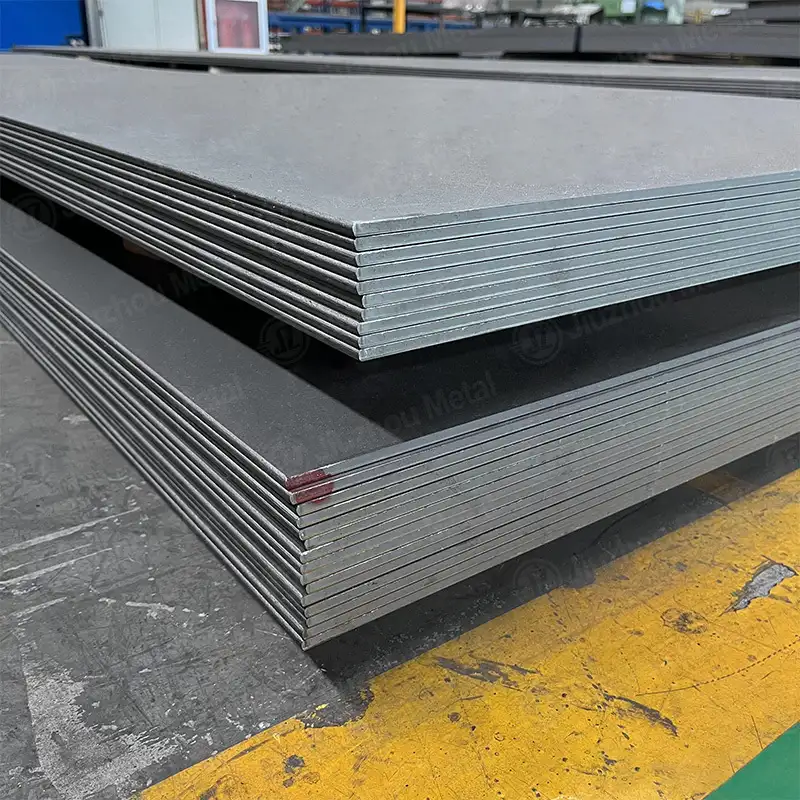
Manufacturing notes: cold rolling, annealing, tolerances and surface quality
-
Cold-rolling steps: hot strip enters continuous cold mill, passes through multiple stands with progressive reductions, then is annealed (recrystallization anneal) to restore ductility and set mechanical properties. Final skin-pass gives desired surface texture and thickness control.
-
Annealing: soft anneal cycles reduce residual stress and establish uniform microstructure; annealing atmosphere and control affects final surface (scale removed by pickling for bright finish).
-
Surface finishes: 2B finish (bright, smooth) is common for parts requiring stamping or further processing; pickled & oiled is common for storage/shipment to prevent rust.
-
Quality control: mills supply chemical mill certs and mechanical test reports; additional NDT (ultrasonic, eddy current) or dimensional inspection can be requested prior to shipment.
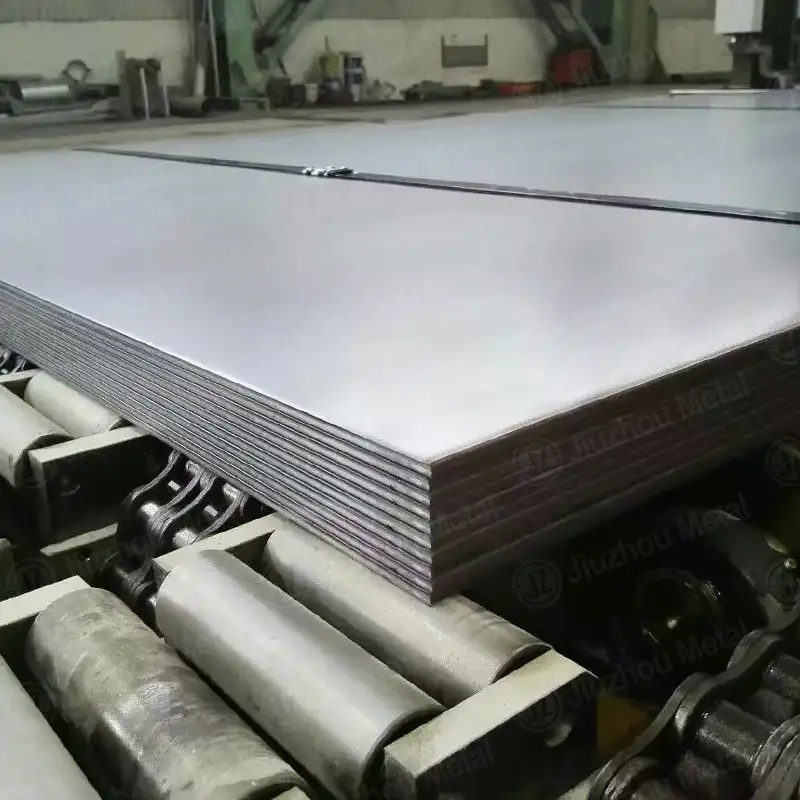
Fabrication behaviour: cutting, machining, welding, corrosion protection
-
Forming & stamping: 1023’s low carbon gives good pressability; lubrication and correct die clearances extend die life.
-
Machining: generally good machinability; best practices include using sharp tooling and moderate feeds to avoid built-up edge. Adding lead or free-machining additives increases machinability but alters specs — only accept if specified.
-
Welding: common processes (MIG/GMAW, SMAW) are compatible; preheat typically not required for thin cold-rolled plates, but joint design and heat input control matter. Use matching filler metal and follow welding standards.
-
Heat treatment: limited hardenability due to low carbon; full hardening is not practical — 1023 responds to normalizing and annealing.
-
Corrosion protection: cold-rolled surface rusts if left unprotected — specify galvanized, painted, or oil-coated finish for storage/transport.
How to specify and buy 1023 cold-rolled plate
When placing an order include the following minimum items on the PO or technical specification:
-
Material grade: SAE/AISI 1023 (UNS G10230) — or specify required chemistry bands.
-
Product form: cold-rolled plate / sheet / coil; specify cut-to-length or coil.
-
Thickness & tolerance class, surface finish (2B, bright annealed, pickled & oiled).
-
Mechanical properties: minimum yield and tensile (if critical).
-
Certifications: EN 10204-3.1 or 2.1 mill certificates; include chemical and mechanical test reports.
-
Inspection & tests: PMI (spectro), dimensional reports, hardness testing, NDT if required.
-
Packing & labeling: specified for export, including wooden crates or blanket wrap, per IMDG if required.
-
Delivery & Incoterms: FO B, CIF, EXW — specify.
2025 price comparison (United States, Europe, China)
Important: steel prices move rapidly and are influenced by tariffs, energy, scrap and global demand. Below is a 2025 snapshot of market ranges for cold-rolled coil/plate typical for commodity low-carbon grades (used here to provide realistic buying guidance for 1023 plate):
| Region | Typical cold-rolled price range (2025, per metric tonne) | Notes / source |
|---|---|---|
| United States | ~US$1,050 – US$1,130 / t (spot CRC index ranges often around US$1,050–1,120/ton in 2025 observations) | US market weekly indices and service center base prices indicate CRC in this band for much of 2025. |
| Europe | ~€900 – €1,100 / t (regional variation and duty impacts apply) | European mills and broker quotes vary with feedstock and energy; indexes show parity or modest premium vs. US when currency and local taxes applied. |
| China (domestic ex-works) | ~CNY 3,600 – CNY 4,200 / t (~US$500–US$590/ton at varying exchange rates during 2025) | Chinese domestic plate spot indices and regional city price surveys show medium-thick plate in the CNY ~3,300–3,800/ton band with coastal CRC higher; exporters often price lower FOB when volumes are large. |
How to interpret these numbers for 1023 plate purchases:
-
The mill-sell price for a branded cold-rolled plate grade like 1023 will typically follow general CRC indexes; specialty chemistries, required certificates and strict surface acceptance will add premiums.
-
FOB China factory prices are commonly lower than landed prices in Europe/US once freight, insurance and duties are added — but recent trade actions and tariffs can narrow the gap.
Buyer tip: ask suppliers for detailed cost breakdowns (material price, value-added steps like pickling/anneal, testing, packing, and freight) and for current mill test certificates.
Why choose MWAlloys for 1023 Cold Rolled Steel Plate?
MWAlloys is a China-based manufacturer and global supplier focused on industrial steel products. For customers who require low lead times and the most competitive landed costs, MWAlloys provides:
-
Factory direct pricing — 100% ex-works factory advantage, removing multiple middlemen markup.
-
Visible stock — real-time stock updates for typical cold-rolled thicknesses and coil sizes to support fast dispatch.
-
Fast shipment — options for air/sea priority and bonded warehouse pickup for frequent buyers.
-
Traceability & certs — EN 10204 / ASTM grade mill certificates, chemical and mechanical reports supplied for each order.
-
Quality assurance — in-house inspection and optional third-party inspection before loading.
Frequently Asked Questions
1) Is 1023 steel suitable for structural welding?
Yes for light and moderate structural applications, but verify design code requirements; in heavy structural use, refer to the structural grade specified by the project (e.g., EN S235/ASTM A36).
2) Can 1023 plate be hardened by heat treatment?
Not effectively — low carbon limits hardenability. Normalizing or annealing for ductility is standard; quench & temper is not practical for significant hardness increases.
3) What surface finish should I order for stamping?
Order 2B or bright annealed for best forming and surface appearance; specify skin-pass where slight texture is acceptable.
4) What certs come with MWAlloys product?
Mill certificates per EN 10204 (2.1/3.1) are standard on request; chemical & mechanical test reports accompany each shipment.
5) How do I calculate weight for transport?
Use Mass = Length × Width × Thickness × 7,850 kg/m³ (see section 7).
6) What edges/tolerances are standard?
Thickness tolerance depends on mill class; buyers often specify “±0.03 mm” for thin gauge where precision is required.
7) Is pre-treatment needed before painting?
Yes, pickling or degreasing improves paint adhesion and reduces flash rust risk.
8) Can 1023 be galvanised?
Yes; hot-dip galvanizing is common but coordinate pre-treatment and post-plating inspections for dimensional changes.
9) How long is typical lead time from MWAlloys if in stock?
When in stock, MWAlloys can typically arrange shipment in days; if not stocked, lead time follows mill coil production schedules — confirm on quote.
10) Are there “free-machining” variants of 1023?
Variants with lead or sulfur (free-cutting steels) exist but are chemically different and must be specified explicitly.

